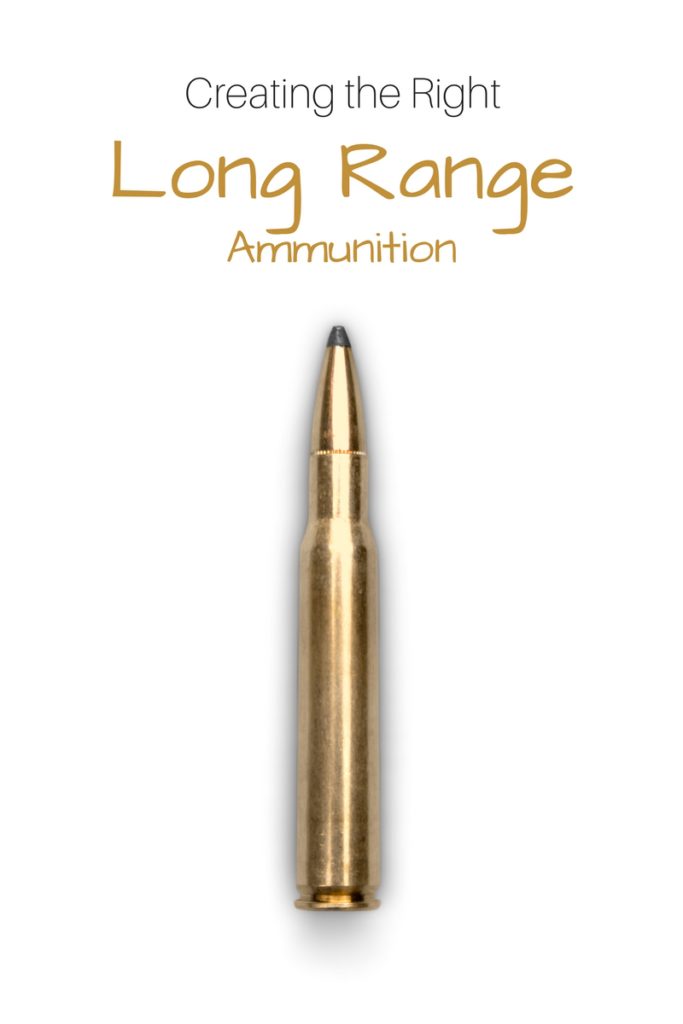
Did you know that the ammunition you use has a lot to do with your ability to shoot accurately? Throughout most of the community, long range is considered to be at least 500-600 yards out. This is where you begin to see all the variations in components of loading techniques that affect the bullet’s point of impact. Here are some ways to expand the consistency and accuracy in ammunition for long range shooting.
Creating the Right Long Range Ammunition
Powders & Primers
Propellants will also require testing to find the best results. Long range shooting demands the variation stay as low as possible, so keep in mind that finer-grained powders will typically meter the easiest. Weighing each charge by hand is a great habit to ensure consistency.
Consistency requires minimal temperature sensitivity. For those who anticipate shooting in different climate settings, single-base propellants (also known as nitrocellulose) will have less performance variation with temperature fluctuation when compared to double-base powders. Hodgdon and Vihtavuori 100 series are great examples of single-base powders.
Keep in mind, accuracy is more important than speed at long range. Don’t give up consistency to gain an extra 40 fps. You will have more accuracy with propellants with faster burn rates. As with projectiles and propellants, you’ll need to experiment with different primers. Avoid using magnum primers unless you’re shooting a magnum.
Projectiles
The bullet plays the most crucial role in accuracy. It will take some time and a lot of testing to find the best bullet for your firearm. When you’re in the trial and error process, be sure to test the bullets in a long range setting for accurate readings. Though it still helps testing several scenarios, testing under 400 yards will leave important questions unanswered that will lead inconsistency in your shot.
Consistency is key. Organize your bullets based on length and weight. Keep in mind that bullets 30-caliber and above will withstand weight variation better than smaller bullets. Use a bullet comparator to measure from the base to the ogive location and keep variation less than .005-inches.
Ballistic Coefficient (BC) measures how slippery a bullet is while in the air. The bullet will have less effect drag the higher the BC. The higher the BC, the less effect drag has on the bullet. Also note that the longer the bullet is, the more difficult to achieve a stable and accurate shot.
Cartridge Cases
Cartridge cases bring all components together and their importance should not be overlooked. Keeping your cases organized is extremely beneficial for accuracy across multiple climates and settings. Best practice is to separate all your cases by the manufacturer and by the number of times they’ve been fired.
For long range consistency, sort cases in 1-grain weight increments. Deburr ash holes and ensure that primer pocket depths are uniform. This helps provide a more even primer ignition and ash. Neck thickness is also very important for consistency. I’ve found great results in building compact chambers and removing the brass from the necks of the cartridge cases to fit.
Reloading Die Sets
The cartridge will expand to the walls of the chamber when fired. You have the option of resizing the case back to its original size or you can size the neck down. This will keep the body the size of your chamber. Your shots will be more consistent when you leave the case body the size of the neck. The goal is to have both sides of your case body contact the sides evenly.
You will lose consistency in your shot if the case body expands and touches the side of your chamber first. Keep in mind that there are limitations to neck sizing. You only want to use neck-sized ammunition in the gun in which it was originally fired.
Cartridge Overall Length (C.O.L)
Long range bullets have long gives that perform best seated on or even into the rifling. For best accuracy load, experiment with several jumps to the lands when seating bullets. Your target goal for a short jump should be between .000-.003 inches. To ensure the best consistency, be sure to measure to the ogive and not the bullet tip.
Matt is an avid outdoors enthusiast and part of the Gunwerks.com team. When he’s not camping, you will find Matt writing about cutting edge process for long range civilian marksmen.
Learn more at:
gunwerks.com| fb.com/gunwerks | youtube.com/user/gunwerks| instagram.com/gunwerks
– – – – – – – – – – – –
Thanks for visiting Preppers Survive. Before you leave subscribe to our newsletter. If you enjoyed this article, please share it on your favorite social media.




Good article. I would add that you need to understand how the projectile performs in various wind conditions, as well as when you are shooting at up and down angles. Bullet weight and type will produce differing results.
This article is so general in nature and scope as to be of little use to anyone who actually intends to reload. For a keyboard warrior who will never do anything of the sort, it is perfect. Has the author ever done any reloading? I doubt the experience level here warrants the time spent writing an article. Does that make me an ash hole? Or does that make me a primer pocket?